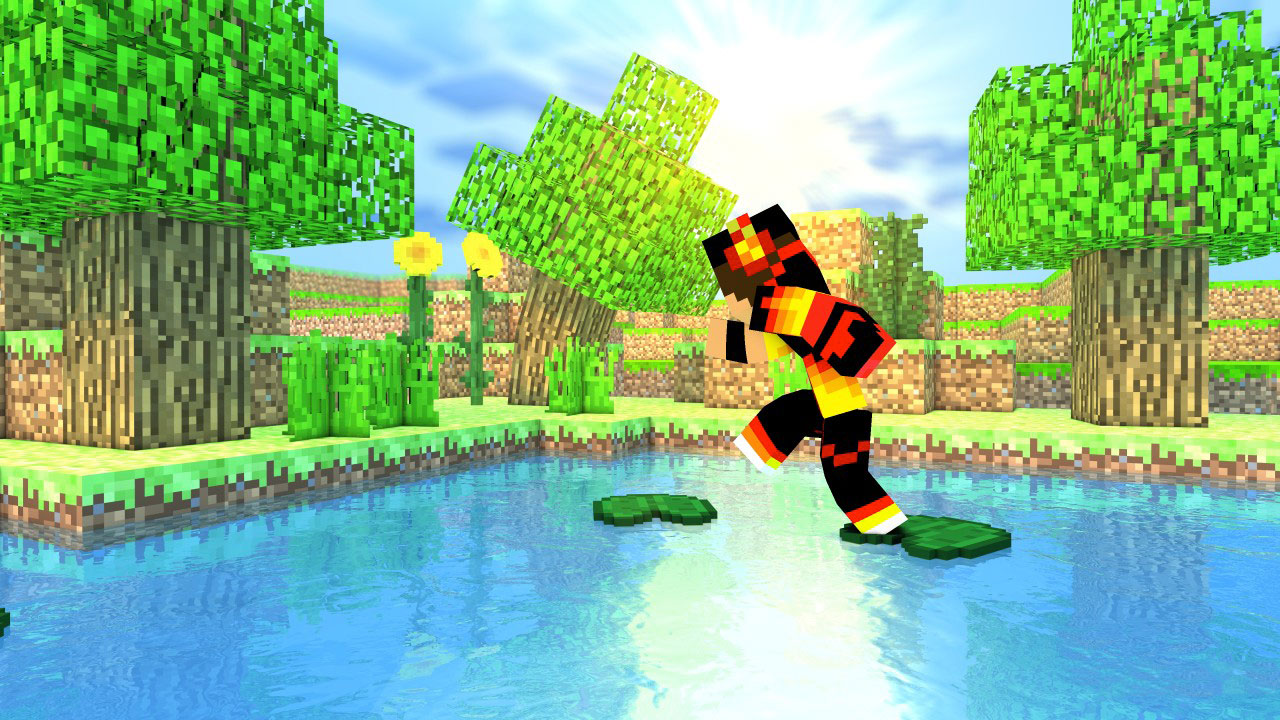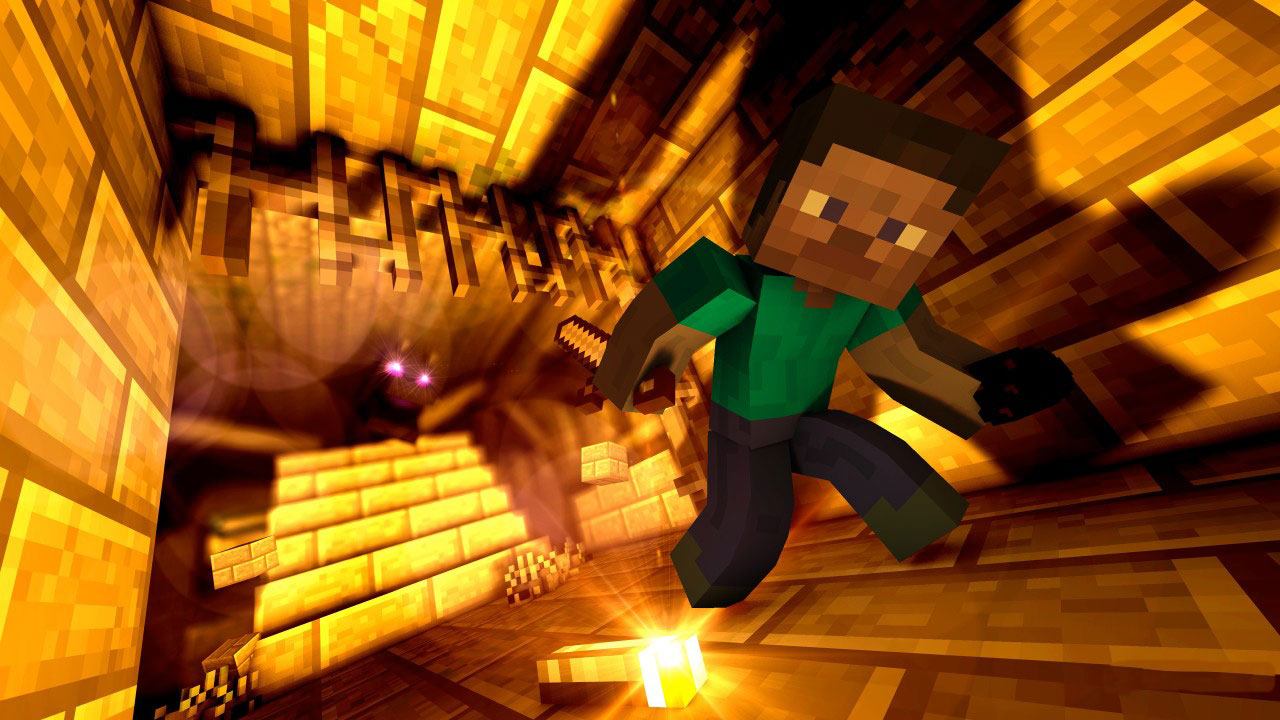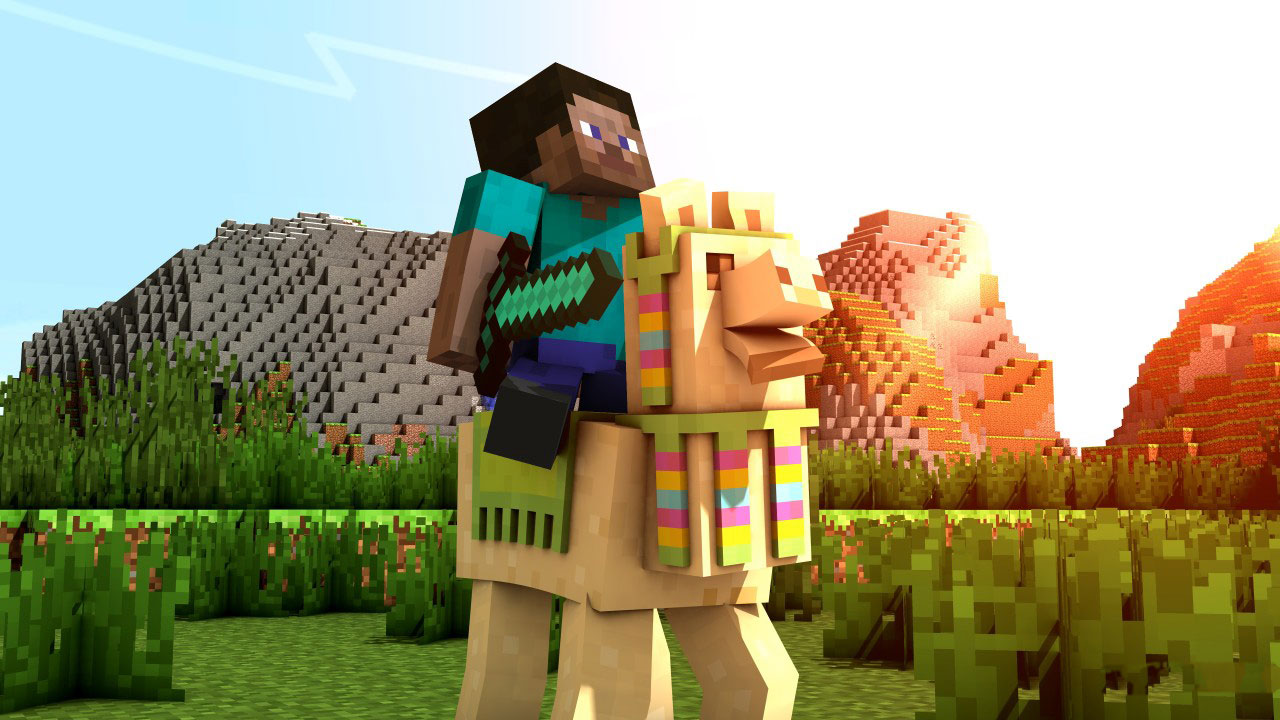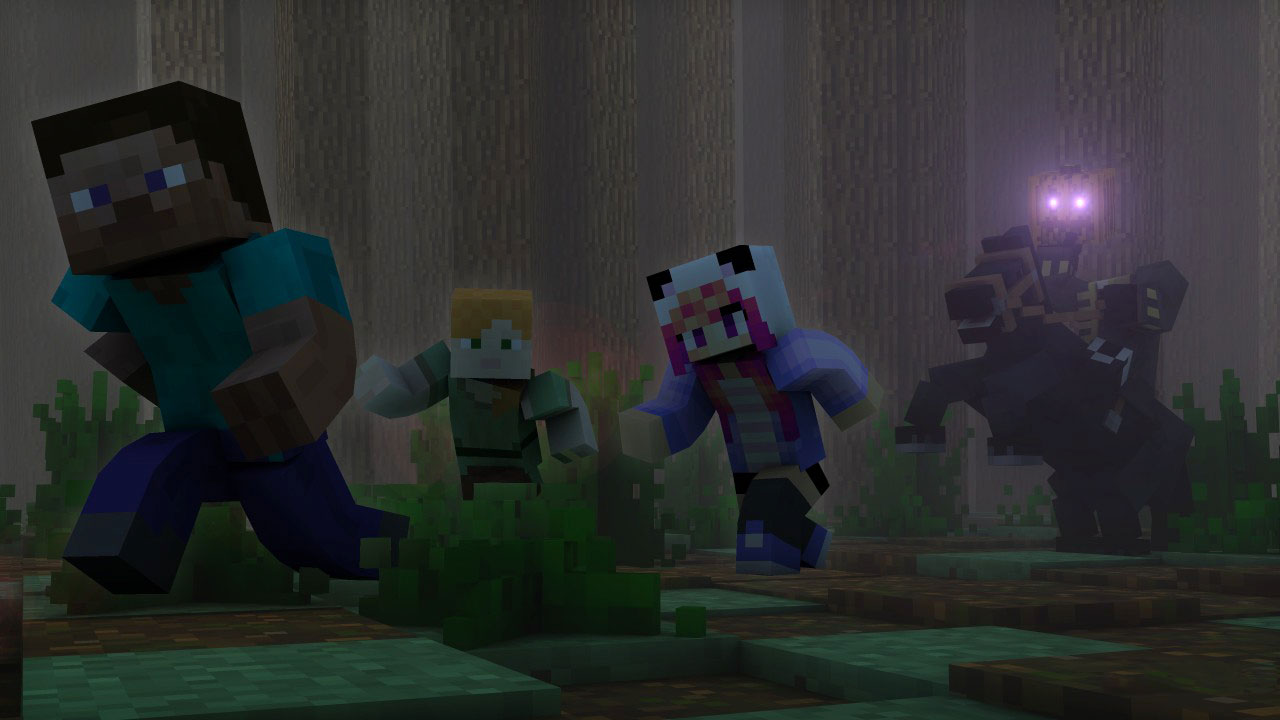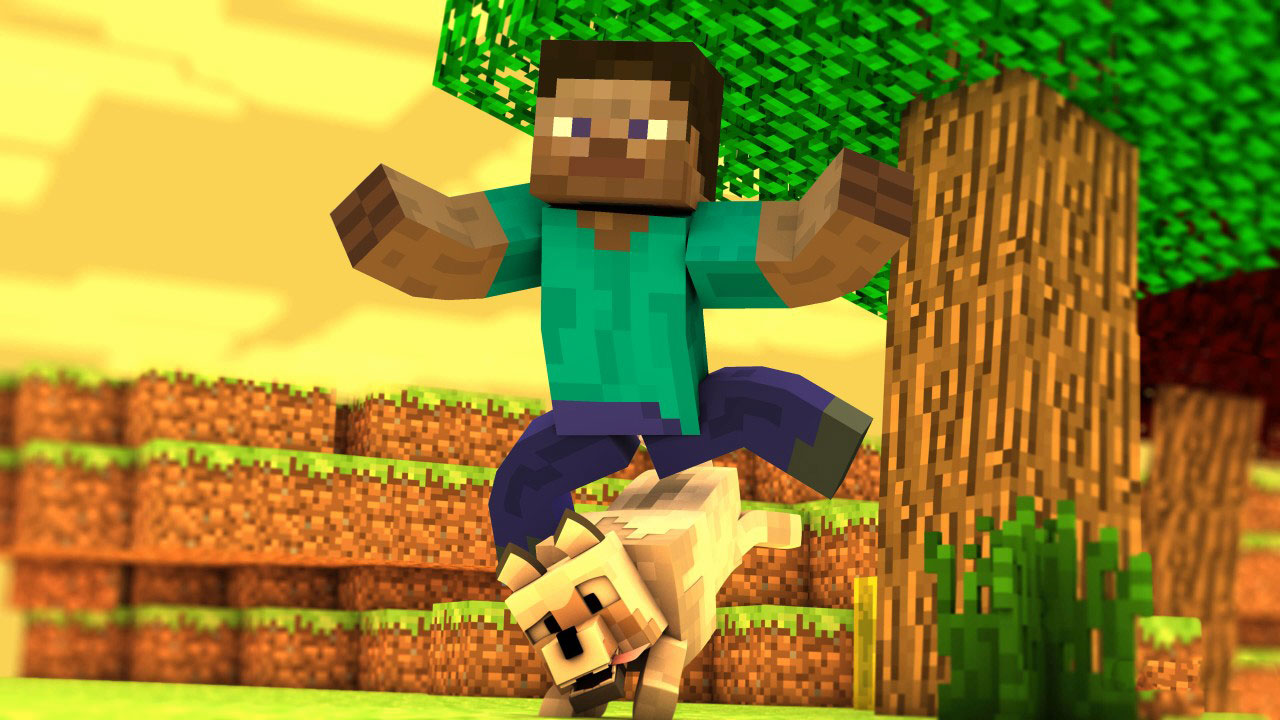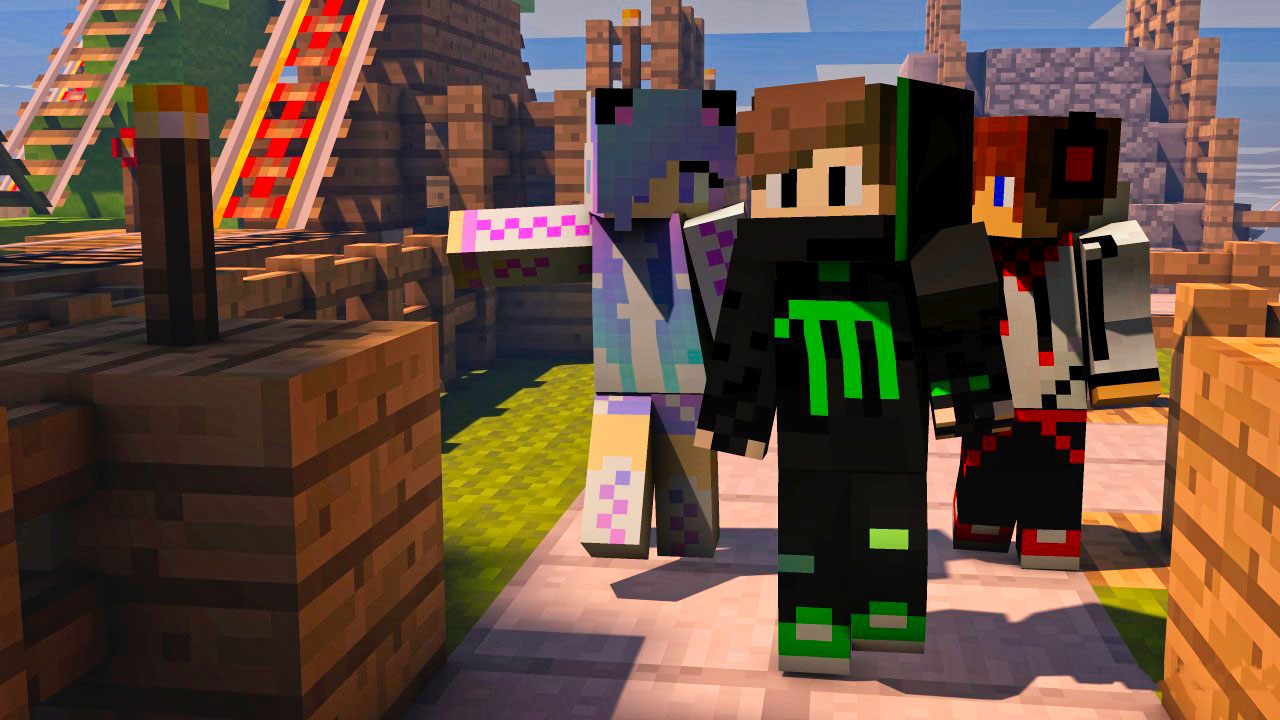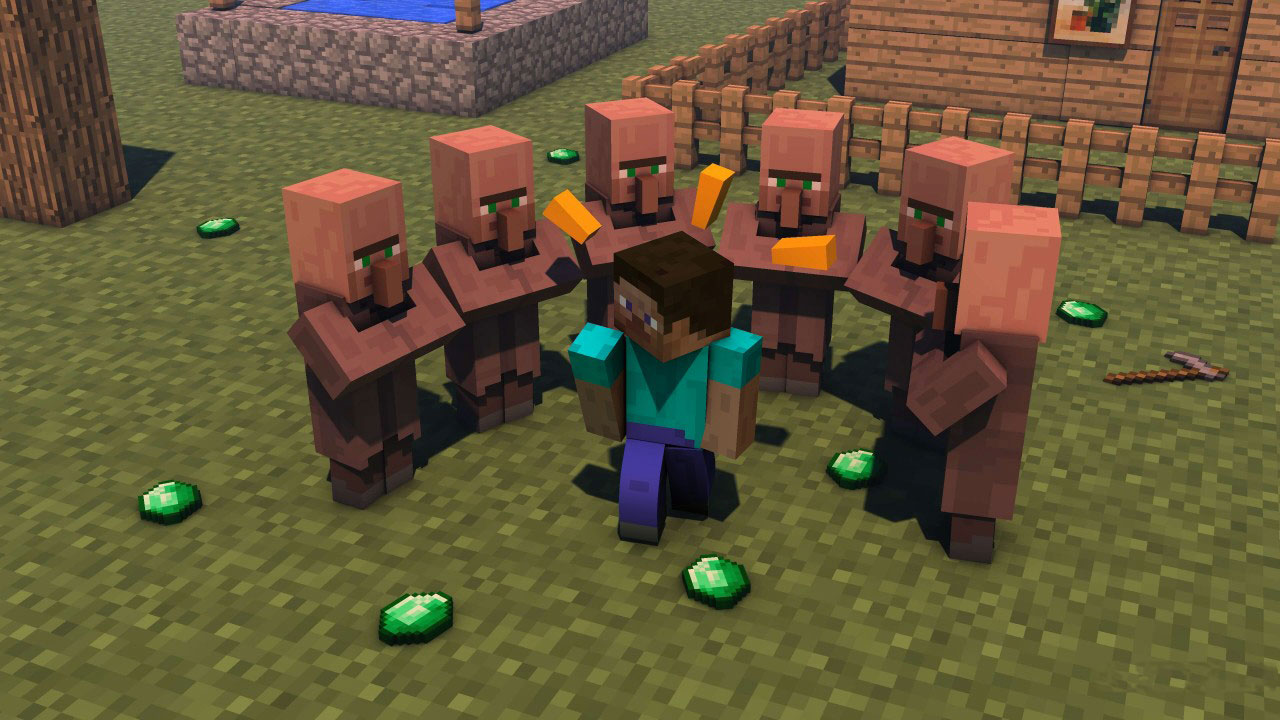As the first day begins, the participant will have to collect timber. To begin with, the participant should look around then proceed towards some other trees. The player should collect at least 5-8 blocks of wood logs from trees by holding down the left mouse button while their cursor is on the block. This is sufficient wood to craft the basic instruments and items the player needs instantly, though you’ll certainly want more a little later.
Once the player opens up their inventory (E by default), they’ll observe the stock window.
The participant’s avatar takes up almost all of the top part, The stock below is your distance for the player’s items. The bottom 9 slots would be the slots that are usable, referred to as a hotbar. Four armor slots are on the left of the player’s character (ignore those for now, they don’t become useful until much later on), and a 2×2 square to the right of their character as the player’s own crafting grid, which may be used to craft some standard products. By clicking on the recipe book (5) the participant could easily craft items in this section. Set the wood logs into any space from the crafting section, and wooden boards will appear to the right of your wood. Left-clicking the planks can cause the wood to disappear and planks to seem as a newly crafted item. When you have the boards in your hand, you can drag them down to your own stock, and set using the left click.
Four wooden planks can consequently create a crafting table (put 4 wooden planks at a 2×2 square) and place the crafting table to utilize it. Right click on your crafting table to access it, this crafting grid is a 3×3 square, big enough for each one of the craftable items in Minecraft. The first tools that the player should craft are a wooden pickaxe and a wooden sword. If any stone blocks are exposed close by, the participant can mine them using a wooden pickaxe to get 19 blocks of cobblestone. This is the amount that the player should make every simple tool they will need for this tutorial: a sword, a pickaxe (you will need the upgraded pickaxe for iron and other blocks), an axe, a shovel, a hoe, and a furnace. You’ll require the furnace to cook meat for meals and smelt any ore you mine with your pickaxe. When the player has a stone axe, they ought to make an effort to get more wood as time permits; additional wood is helpful in lots of ways, from strengthening and strengthening your base to creating charcoal, or simply crafting into boards for quadruple the amount of building blocks.
If all goes well, the player can obtain coal fast. Together with the sticks they created from their wooden planks and some coal, they will have the ability to earn torches (coal over a pole on the crafting grid). With torches in hand, you can make for the nearest cave, since iron ore is the next goal. Underground will actually be safer than the outside when night falls, therefore mining the very first night away is not a bad idea in any way. On the other hand, if nighttime is falling and you have not found coal, use to furnace to smelt more wood (“logs”, maybe not planks) to create charcoal, a substitute. (Additionally, you can collect 3 blocks of wool from sheep and mix it with three planks to make a bed. With this you can sleep through the night with no worry of critters killing you. The downside of this is wasting sunlight another day mining, or working inside.)
Night
For night time, the primary danger will probably be hostile mobs (monsters) that just predominate in the dark. These include zombies, skeletons, and lions. It’s a great idea to remain in a well-lit lit shelter (see below).
If you are actually seeking adventure you could always equip yourself with a stone sword and go fight some mobs; you might be able to get some materials for further crafting and some early experience amounts, which will come in handy later on. However, every one of these creatures will either perish (zombies and skeletons) or be less dangerous (spiders) when dawn comes, and it’ll be much easier to combat them later when you have better equipment. If you have to fight monsters this ancient, be particularly wary of skeletons; in the open their branches can kill you in a distance, and if they are in the water or on higher ground, it’s unlikely you’ll have the ability to reach them before they turn you into a (dead) pincushion. If you happen to see any of the stronger creatures, stay well away from them: At this point a enderman, witch, or even a creeper can kill you easily.
If you are repeatedly getting killed (perhaps you got overly ambitious, a monster obtained into your own shelter, or you didn’t manage to make a refuge), one desperate answer is to go into “peaceful difficulty” (see “changing the rules”, below). But think about this: This being your first day, you aren’t actually losing considerably before the deaths (at least not after what stuff you’ve accumulated is lost), which means that you can just tough it out before dawn and begin again. Continue on practicing killing mobs until you get the hang of it.
Shelter
As mentioned above, you really want to find or create some sort of shelter before your first night, since you won’t want to get murdered. The “Shelters” article above gives a great deal of emergency shelters and then more advanced ideas, but it only takes a little thinking ahead to handle a decent shelter for the first night. As you move around collecting wood and so on, examine the landscape for possible houses. Easiest (if you’re able to find it) is a small cave with a single entrance that you can fence or wall off. When it’s not really ideal, think about if you’re able to fix it immediately — state, fencing off a back doorway to deeper caves. Should youn’t have a cave, then you could have the ability to create one, simply by digging into a mountainside or even roofing on a small valley. If instead you have wide, flat space, then go ahead and build a little house. In all instances:
Do not be overly ambitious the first night, because you need it safe before dark, and you also want to light up the distance that you maintain. You can always enlarge and decorate your home afterwards, or even rearrange the landscape around it.
When choosing your location, it is fantastic to have a view of the landscape so it is possible to see whether any critters are waiting for you at the morning.
Learn more about the awesome forces of timber: Fences may be used not only in the obvious manner, but as windows or translucent walls, with fence gates to get in and out. Doors provide a full-height option, but you’ll want to surround them with solid cubes (planks, stone, even dirt, but not fences). A couple properly-placed ladders may make it a great deal simpler to get up to your roof or up a hill. A chest are also useful — stash anything you’re not going to use shortly, so you don’t need to be concerned about it if you just happen to get killed.
If you’re able to manage to make a bed early on, then put that in your shield and use it the very first night you have it. Getting killed is not as painful when you respawn into a safe place! After the first night, you may well need to spend the nights mining and crafting.
Light
Monsters can not spawn within 24 cubes of you, however huddling in the dark isn’t a pleasure — and when you do leave your home, you don’t wish to come back to find a monster has transferred in. Thus, you need to light up your space, and in this time, the light you have is torches. A single torch gives enough light to prevent monster spawns completely in just a 7 block array (barring obstructions), and decrease them for roughly precisely the same distance beyond that. That includes vertical and horizontal measures, so the safe zone just runs 3 distances or so diagonally. Even outside the safe zone, obtaining some mild will sharply decrease the opportunity of critters spawning (based on how much light), but it’s much better to use enough torches to keep your whole home well-lit. When you’ve got extra torches after that, try to light some distance out of your house (or at least the entry) also, to push back the area where monsters will spawn.
Food and appetite
Once you have tools and shelter, your second priority will be food. Hunger will take some time to hit, so it should not be a problem in your first day, but you need to attempt and pick up some food for as it does. But when you have been moving about for some time, your food pub will start rippling and begin to decrease. If your food bar drops below 90%, you will not regenerate health, and if it gets to 30 percent, then you can’t sprint. If the hunger bar goes down to empty, then you will begin losing health. Unless you’re in Difficult mode (along with a beginning player should not be), you can’t really starve to death, however you’ll go down to 1 health point in Normal mode or half of your health in Easy mode, which leaves you rather vulnerable. You don’t lose appetite in Peaceful mode, which means you don’t need to worry about that.
In recent variations of Minecraft, the primary drain on your hunger is from healing damage. You’ll have a little grace period (see “saturation” on the Hunger webpage) when beginning the game and after ingestion, but when that’s exhausted, healing a single point of damage (Half Heart.svg) costs the equivalent of 1.5 thirst factors (that’s 3/4 of an observable “shank”). Avoid taking falls of over 3 blocks, burning or drowning yourself, or otherwise taking damage that you will have to heal.
A couple of other actions also cause hunger, though more slowly:
Struggling: The two attacking mobs and receiving damage cost hunger, even before you begin attempting to cure damage. (60 blows either manner, matches healing Half Heart.svg.) You’ll have to slaughter a few critters but pick your fights carefully. Accepting damage in other ways counts for this too, but every time you take damage it counts as one “blow off” regardless of how much damage you chose.
Sprinting. If you double-tap the forward movement key (W by default), or push on your sprint key (Left Ctrl by default), you may sprint. This goes somewhat quicker, but it also uses up food. (60 meters games recovery Half Heart.svg.) However, if you just happen to have a sufficient quantity of food in your inventory, you could always do it your own way.
Jumping. Apparently, you should jump some only to get round, but don’t bounce around occasionally or unnecessarily. (120 jumps matches healing Half Heart.svg.) Sprinting jumps are particularly expensive, 4 times as much as a normal jump, though they would be the quickest mode of transportation early in the sport. Swimming and mining blocks cost a little desire, but those are minimal compared to the items above.
Notice that if you’re (staying) at full health, and not fighting, sprinting and/or jumping, or mining cubes, then you will utilize no food. Therefore, if your character has a secure place to stay, it’s possible to simply stay put to conserve food when waiting out the night, a storm, or crop/animal growth.
Consider making a basic crop farm immediately after you have settled in an area. Wheat is where you’ll start:
You are able to use harvested wheat to generate bread. It is possible to obtain it easily using seeds collected by dividing bud. When picking wheat, you may use the wheat/seeds to breed cows and chickens, thus using a better food source.

